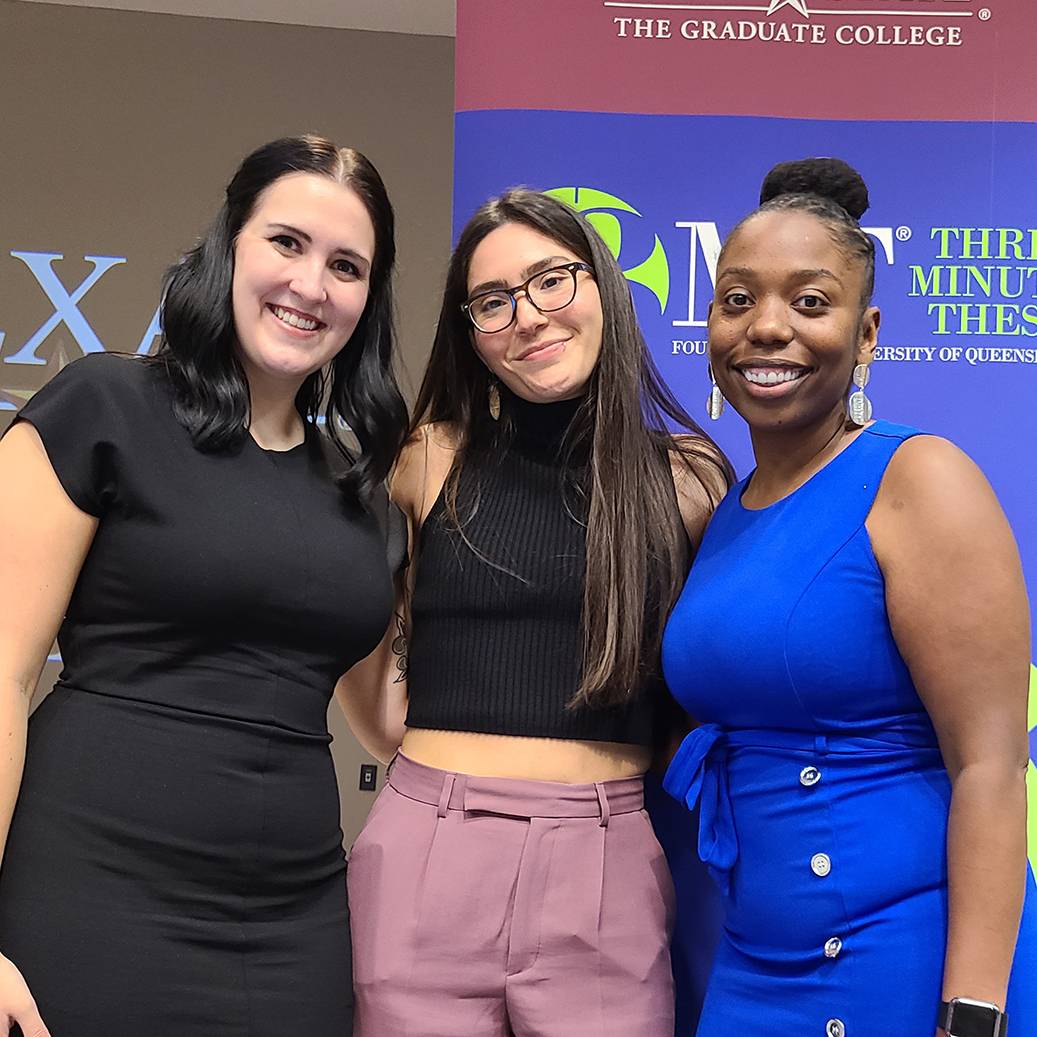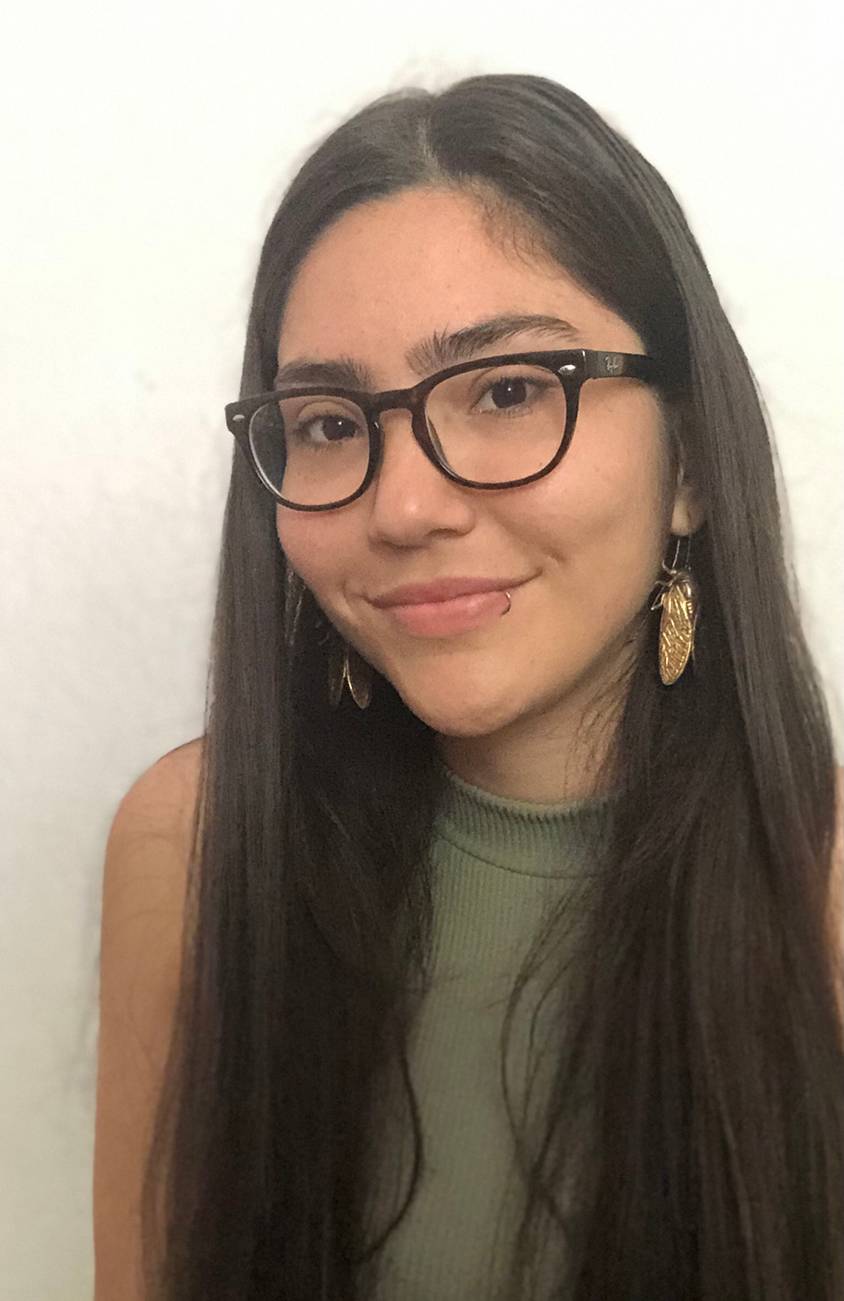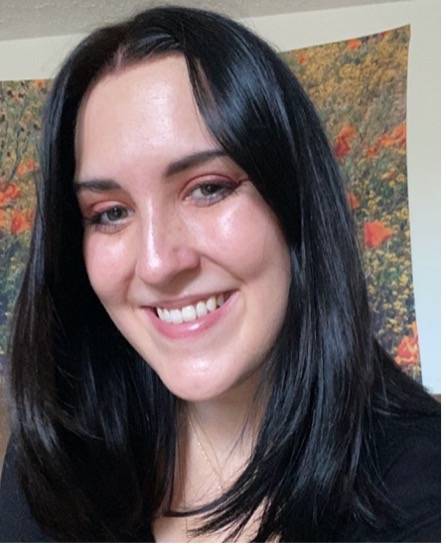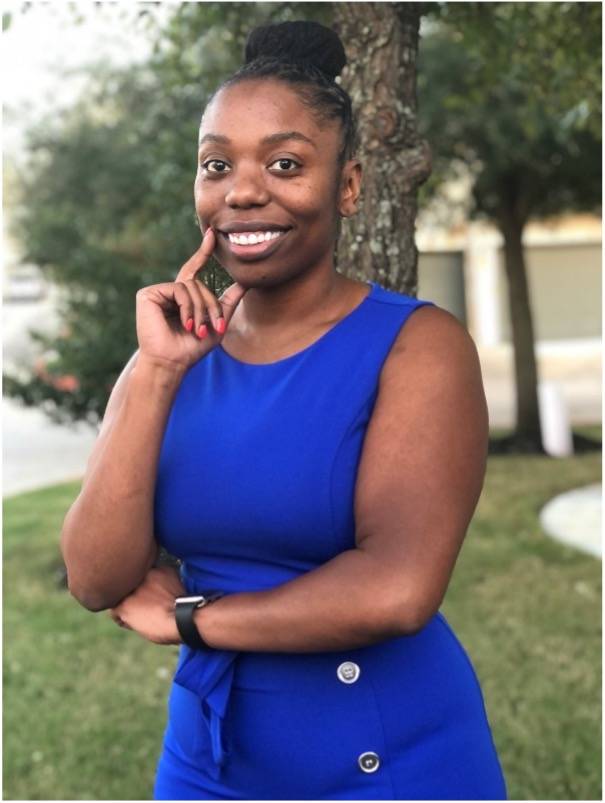Timia Cobb | November 18, 2021


The Three Minute Thesis (3MT®) is an annual timed research communication competition eligible to Texas State graduate students pursuing a research Ph.D. or Ed.D. program and master's students on a thesis track. Participating students have three minutes to present a compelling presentation on their dissertation or thesis and its overall significance to a non-specialist audience.
The competition allows students to amplify presentation skills and earn monetary awards while also promoting their research to larger audiences.
This year's 3MT presentation winners are Maria Moretta-Urdiales, who won first place, and people’s choice, and Abbie Salcedo and Natalie Tucker as runner-ups.
Addressing an environmental threat in Ecuador

Maria Moretta-Urdiales, a doctoral student in aquatic resources and integrative biology, is using environmental-DNA to detect chytrid fungus in Ecuadorian cloud forests. Urdiales’ research won first place and the People’s Choice Award at the 3MT (three minute thesis) competition for masters and doctoral students at Texas State University.
Chytrid fungus (Batrachochytrium dendrobatidis), according to Urdiales, has been detected in Ecuadorian forests since the 1980’s and has been associated with the decline of amphibian populations in South America and the world.
Urdiales, who is from Ecuador, chose to focus her research there to train and empower future generations of Ecuadorian biologists in the application of novel genetic technologies, with a broader focus on the conservation of fragile ecosystems.“Science has always been my passion but being able to do it in my home country is even better. Being Ecuadorian and growing up in one of the most biodiverse countries in the world, makes me naturally want to find ways to preserve what we have left,” Urdiales said. “Assessing amphibian biodiversity and possible threats to their survival is crucial to inform and advise governmental authorities on future conservation efforts.”
Urdiales explains that chytrid fungus is found in Ecuadorian cloud forests, infecting amphibians with the fungus by inhabiting aquatic bodies such as ponds and rivers. However, Urdiales said there are many potential modes of transmission that have not yet been investigated.
“My research will provide better estimates of amphibian biodiversity and how amphibian populations are threatened by an introduced pathogen,” she said. “More specifically, which amphibians are acting as asymptomatic carriers of chytrid.”
By utilizing environmental-DNA, such as water samples from the fronds or at the center of plants that inhabit the forest canopy, the samples are extracted then used to test for the presence of the chytrid fungus.
“We use qPCR, the same method that is used to detect COVID in humans,” Urdiales said. “But, in this case, instead of looking for viral DNA, we are looking for chytrid DNA in environmental samples.”
Studying what impacts social success

Researching the impact of social interactions and perceptions in human behaviors, Natalie Tucker, a graduate student with the Psychological Research Graduate program, examines how the social world influences people’s social success.
Tucker is the runner-up in the 3MT competition.
“If we understand why individuals act out, we can help them manage their emotions and understand the world around them in a more sustainable way,” Tucker said. “When we re-teach people how to understand and interpret the intentions of others, we can reduce their likelihood to make rash social decisions, or to enact violence.”
Tucker hopes her research can provide more to prevention science, which is any form of scientific methodology that attempts to prevent or challenge human dysfunctions, such as violence or confusion, before it occurs.
“Violence negatively affects societal function across the world, and can disproportionately affect individuals in poverty, those experiencing gender inequality, those experiencing abuse or neglect, etc.,” she said.
Tucker’s research stems from the work of Kenneth Dodge and his team at Duke University, who studied at-risk youth and their perceptions of the world. Their research found that negative hostile attributions were harmful to the social success and long-term outcomes of at-risk youth.
“I wanted to see if there was an attribution style that might enhance social success, thereby promoting positive outcomes for those who are at-risk for enacting more antisocial behaviors i.e., isolation, aggression and violence,” she said.
Tucker found she was able to see the many different perceptions people have. “Setting up hypothetical scenarios really allowed us to see how variable our attribution styles are across different backgrounds, ages, etc.,” she said. “It was also interesting to see the link between positive biases and resilience because such a link had not been documented prior in the literature. Now, I plan to test how social support affects this relationship.”
Diversity and inclusion efforts impact organizational change

After witnessing an increase in discussions on racial bias and social injustice, Abbie Salcedo, a doctoral student in adult, professional, and community education, now explores how recent diversity and inclusion efforts have impacted the American workforce.
Her project, “Workplace Injustice: Catalyzing Organizational Change,” was named a runner-up in the 3MT competition. It examines how employees, from any level, have taken their learned experiences to expand organizational change.
This research was important for Salcedo because of the movements like #MeToo, #BlackLivesMatter, and #StopAAPIHate, which has caused Americans to reflect on the societal injustices that exist in the workplace.
“As a Black woman, I felt it was critical to look into the effectiveness of current diversity and inclusion initiatives,” Salcedo said. “As part of my research, I aimed to learn more about how people might be catalysts for change in the workplace.”
Salcedo’s research aims to demonstrate that Diversity and Inclusion are about going beyond compliance requirements and ensuring that training and business practices genuinely reflect company values. She also hopes researchers take advantage of the ongoing discussion about social justice in organizations around the world to identify how to effectively hold leaders and their employees accountable for their organization's diversity and inclusion efforts.
“My goal is to lay forth a framework for successful techniques, processes, and tools for diversity and inclusion training that include the employee's responsibility to advance such efforts in their workplaces,” Salcedo said. “In order to do this, it is necessary to cultivate a workplace culture of accountability.”
Share this article
For more information, contact University Communications:Jayme Blaschke, 512-245-2555 Sandy Pantlik, 512-245-2922 |
